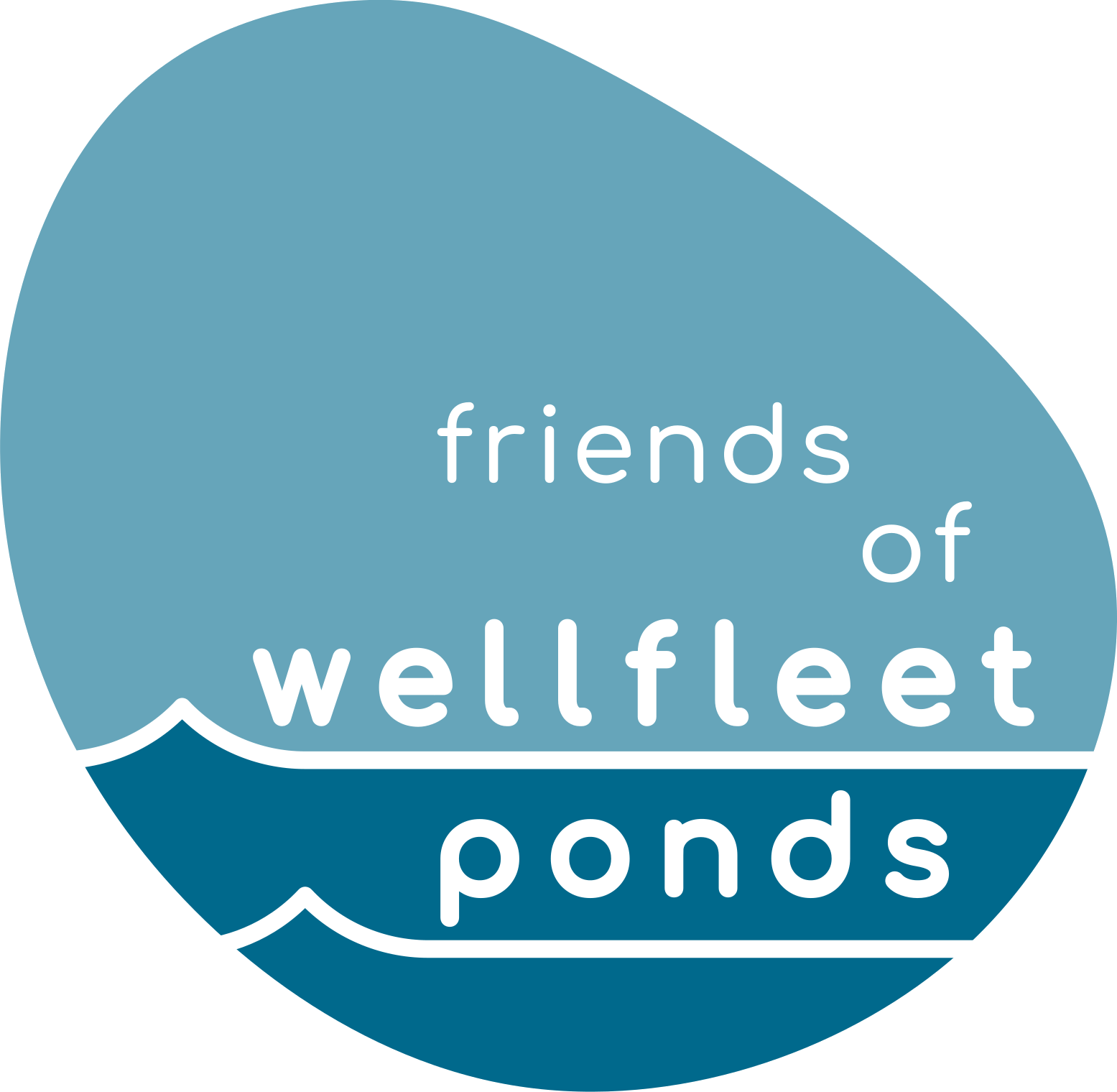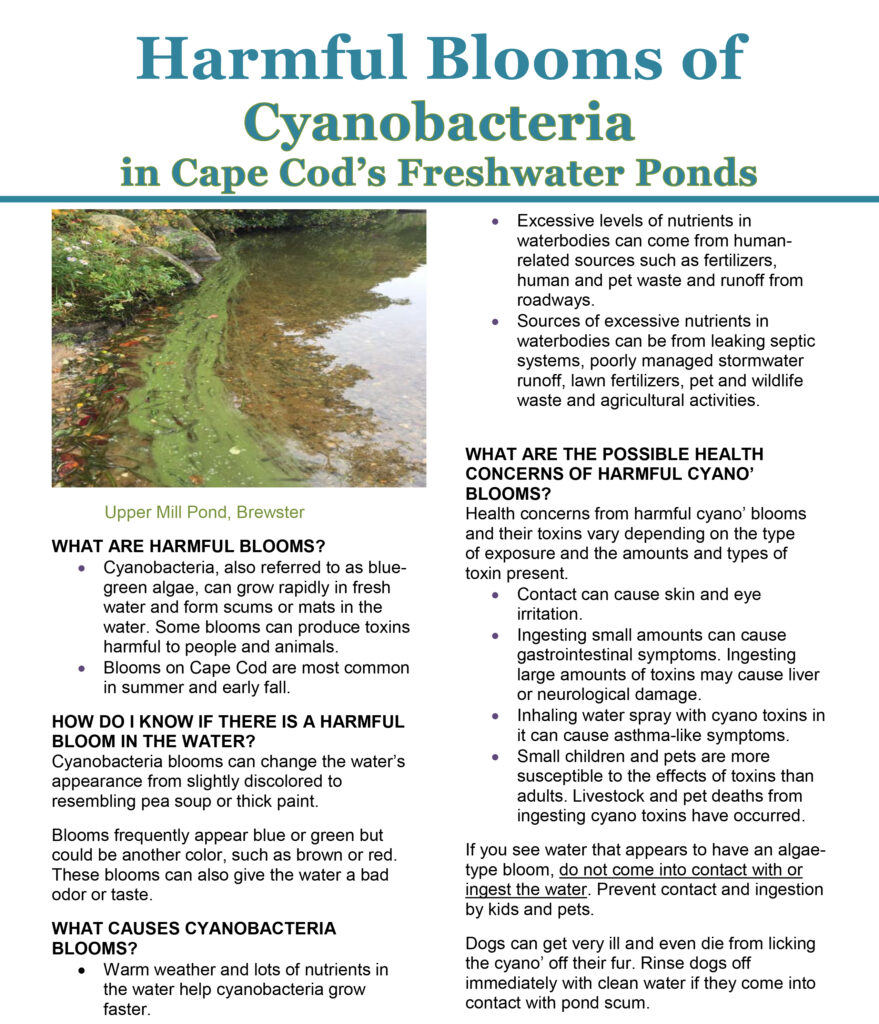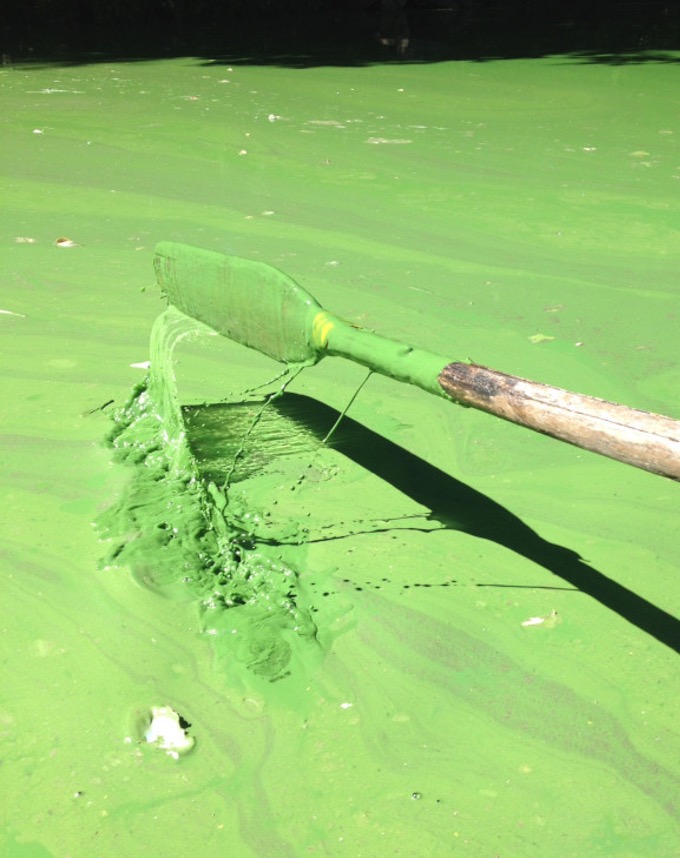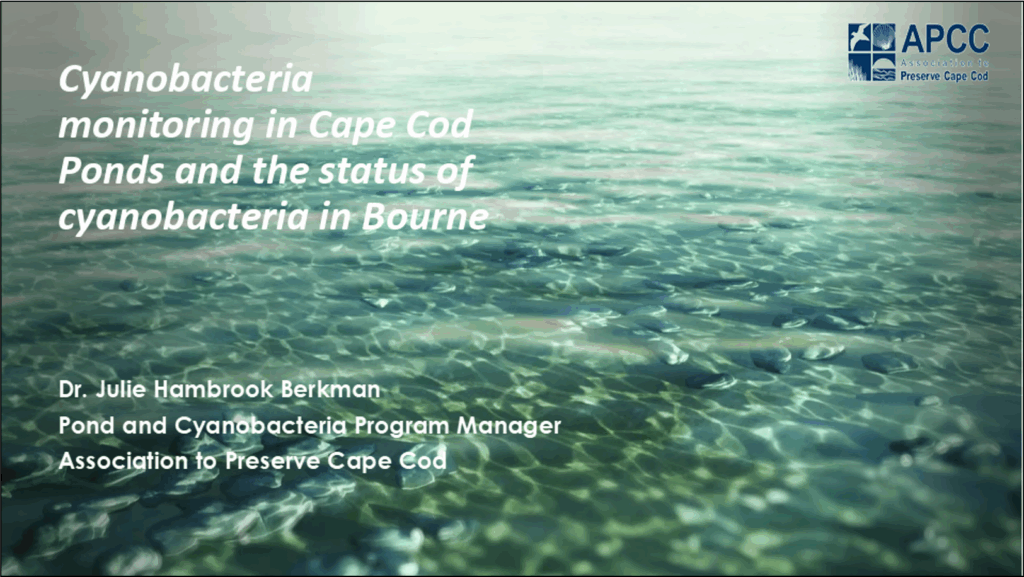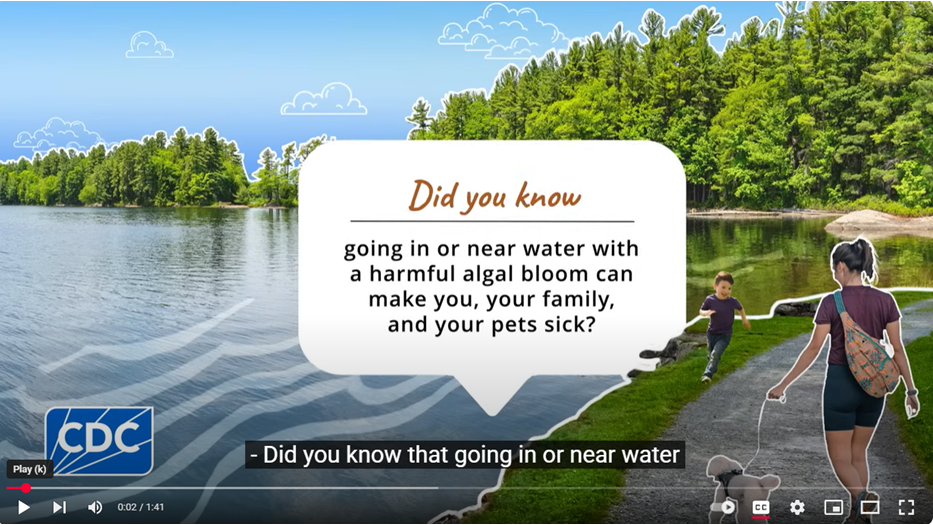A SAD STORY SPARKING SERIOUS CAUSE FOR CONCERN
In 1999, a tragic news story wrapped in an environmental mystery emerged around four dogs that became very sick after swimming in algal-bloom-filled pools at Cliff Pond in Nickerson State Park.
Regrettably, two of the dogs died soon after, but the other two recovered after immediate intervention by local veterinarians. Subsequent lab testing traced the illnesses to toxins the dogs ingested by licking their fur after swimming through masses of cyanobacteria (blue-green algae) that had proliferated in the pools.
The event served as a wake-up call for concerned Cape Codders, prompting citizens and agencies to unite in 2001 in launching the Pond and Lake Stewardship (PALS) program for water quality monitoring of Cape ponds. In the time since, increasing episodes and awareness of harmful algal blooms (HAB) events in Cape ponds led to the establishment of the Association for the Preservation of Cape Cod’s (APCC’s) Cape-wide Cyanobacteria Monitoring Program.
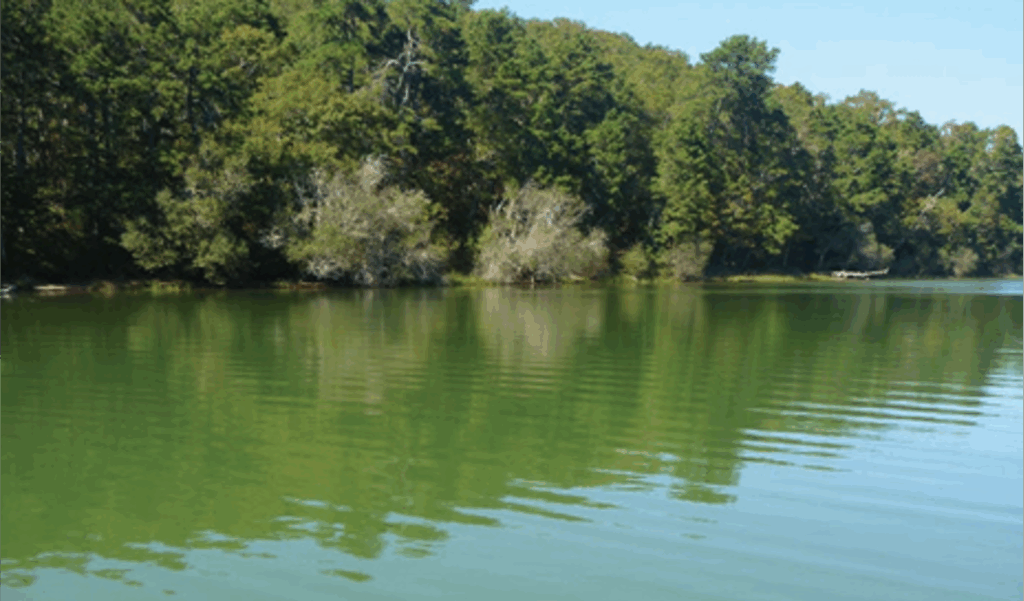
Toxic algae bloom in Cliff Pond. Blooms in 2012 and 2013 caused the pond to be closed to swimming for extended periods. In 2016, Cliff Pond became one of the first on the Cape to receive alum treatments for binding up phosphorus – a major trigger for harmful algal bloom events in ponds.
A few things to know about Cyanobacteria
- cyanobacteria are one of the Earth’s most ancient life forms
- they occur naturally in all kinds of waters around the world
- their ability to produce oxygen via photosynthesis provided the first source for oxygenating our oceans and atmosphere
- they can multiply faster in warm water than other algae
- unlike most other algae, they are able to migrate up and down the pond water column to take advantage of light, nutrients and other conditions which speed their growth
- in doing so, they can outcompete and shade out other algae
- by absorbing sunlight and releasing heat, they add to surface water warming, which accelerates their growth even further
- under such conditions, populations in a pond can increase dramatically, triggering explosive blooms in a short time
- global warming and eutrophication trends are contributing to increasing blooms of cyanobacteria in our ponds and lakes
- these and other conditions that upset the natural state of our pond ecosystems tip the balance in favor of cyanobacteria, invasive species and other opportunistic organisms
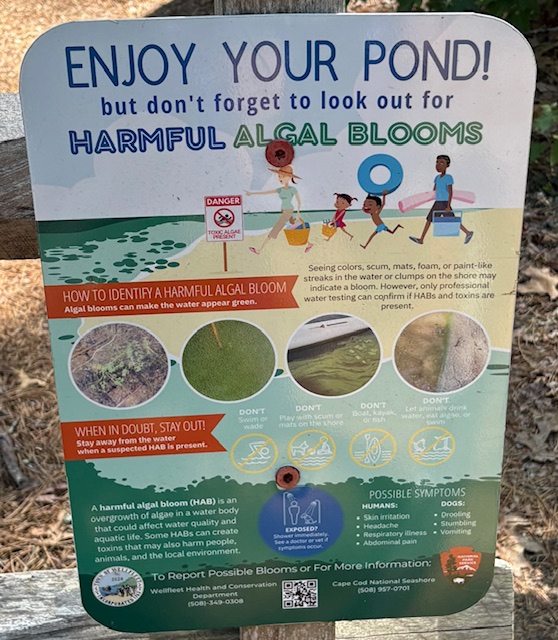
Signs erected in 2024 educate visitors to Wellfleet ponds on the hazards posed by harmful algal blooms
Health risks & other cyanobacteria concerns
Toxins associated with cyanobacteria pose serious health risks, including ones that can cause liver and kidney damage, neurological impairments, respiratory problems, gastro-intestinal issues, skin and eye irritations, and other conditions. The severity of symptoms and the timing of their development varies with the type of toxins present and the extent of exposure. Severe cases can be life-threatening. See www.epa.gov/habs/what-are-effects-habs for more detailed information on the human health risks, symptoms and treatments concerning exposure to cyanobacteria toxins.
Since 2017, APCC’s Cyanobacteria Monitoring Program has documented numerous HAB events in dozens of Cape Cod ponds. The capacity of these algae to thrive and multiply in warm and nutrient-rich waters, where they can outcompete other less-harmful algal species is especially concerning, given current climate warming trends and the challenges of limiting nutrient inputs to our ponds.
For more on cyanobacteria concerns in Cape Cod ponds, check out these videos:
www.youtube.com/watch?v=UbWlEFTHf78&t=32s,
www.youtube.com/watch?v=ftIxsD58zo8&list=PL1CGd4Scv4GJ3k-s7UPgk-3mKIaAIEeNX&index=3
Cyanobacteria monitoring of Cape Cod ponds
Since 2018, staff from the Association to Preserve Cape Cod (APCC) have been working with volunteers, pond associations and towns in overseeing biweekly monitoring of more than 100 Cape Cod freshwater ponds throughout the warm weather seasons.
Monitoring assesses levels of cyanobacteria and the toxins they produce. The presence of visible green to blue-green scums on the pond surface- along with levels (in the pond water sample) of the cyanobacteria pigments phycocyanin and microcystin – are used to determine the risk category for each of the ponds sampled, as summarized in the box below.
When results show a rise in cyanobacteria levels, APCC staff alerts the town immediately, resulting in the town posting signs that prohibit swimming and other activities in the pond until monitoring indicates an ‘acceptable’’ level. An additional round of sampling is initiated the week following a use restriction to determine if the ban can be lifted or needs to stay in place.
https://apcc.org/our-work/science/community-science/cyanobacteria/ offers a wealth of information on the how, why, when, where and what of cyanobacteria monitoring in Cape Cod ponds, along with an interactive map profiling the current status of all ponds being monitored across the Cape.
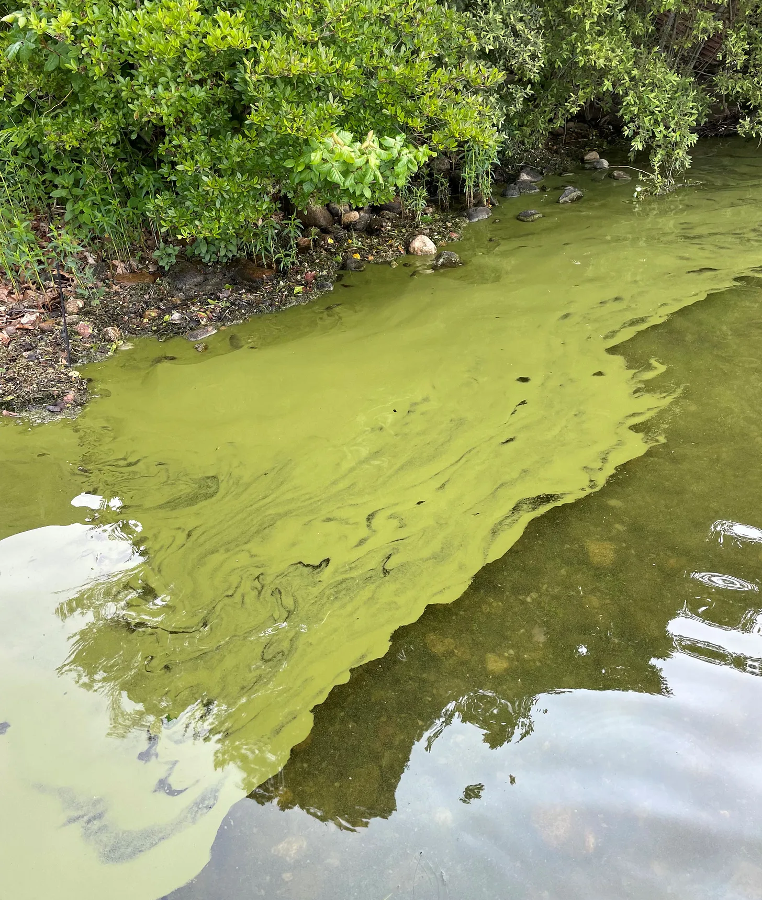
Cyanobacteria scum in Mashpee pond – Andrew Gottlieb
2025 APCC risk categories for Cyanobacteria monitoring*
Acceptable Cyanobacteria scum not detected, and Bloom-Forming Colony (BFC) phycocyanin measures <500 ug/L or: Cyanobacteria scum detected, but determined visually insignificant and BFC phycocyanin measures <100 ug/L
Potential for Concern Cyanobacteria scum not detected, but BFC phycocyanin measures ≥500 ug/L or: Cyanobacteria scum detected and determined visually insignificant and/or BFC phycocyanin measures ≥100 ug/L
Use Restriction Warranted Microcystin measures >8 ppb (Mass DPH guidance); the town posts Public Health Advisory; the pond then remains in this category for two consecutive Acceptable sampling events (Mass DPH guidance)
* adapted from: https://apcc.org/our-work/science/community-science/cyanobacteria/?blm_aid=1541370881
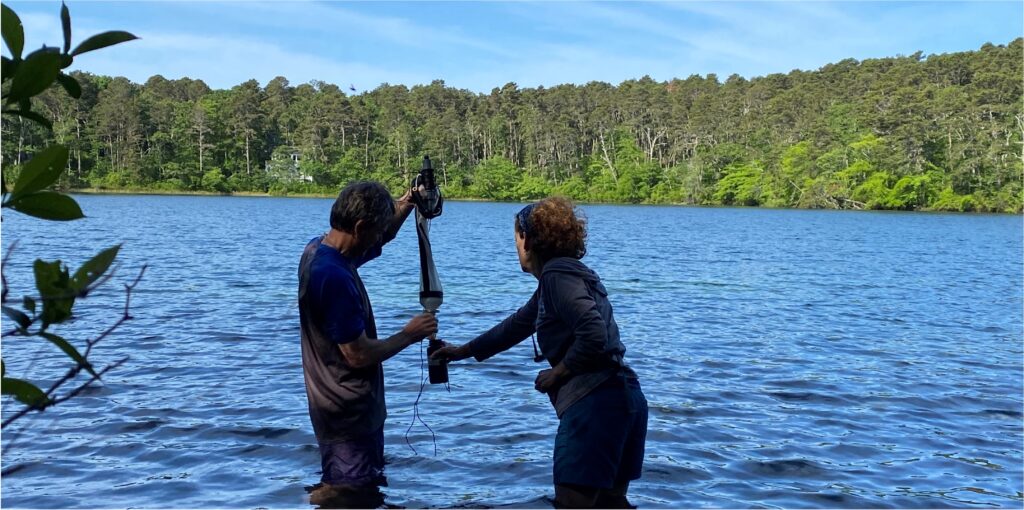
Friends of Wellfleet Ponds volunteers collect a plankton net sample from Great Pond as part of APCC’s cyanobacteria monitoring initiative
Cyanobacteria monitoring of Wellfleet ponds
Each year since 2020, volunteer monitors from Wellfleet have been following the APCC protocol for collecting samples of pond water and plankton for analysis. Eight Wellfleet ponds – Duck, Dyer, Great, Long, Gull, Higgins, Herring and Spectacle – are sampled every other Thursday during the late May to early November sampling season. Sample bottles are dropped off at the town public health office for transport to APCC and the Barnstable Public Health lab for analysis. Results are sent to the town by the next day, with any unacceptable levels triggering an additional round of sampling the next week.
DID YOU KNOW?
Friends of Wellfleet Ponds members serve as volunteers for collecting the bi-weekly cyanobacteria monitoring samples from Wellfleet ponds
So … how are Wellfleet ponds doing?
Thus far there have been only a handful of occurrences of cyanobacteria populations reaching unacceptable levels in Wellfleet ponds. This included ‘Use-Restricted’ closures of Gull Pond in July 2019 and Duck Pond in October 2022. ‘Potential for Concern’ levels were also reported for Duck, Great and Gull ponds in July 2022, for Great Pond in November 2023, and Duck Pond in September/October 2023. Cyanobacteria blooms were also observed in Gull Pond by Cape Cod National Seashore staff monitoring in November 2019 and 2020.
Although in comparison to ponds in other more developed parts of the Cape, this track record seems good, we caution that any cyanobacteria bloom episode should be cause for concern. Given the severity of health risks associated with exposure to the various toxins they contain, these events should not be taken lightly.
The recent trend of higher levels of cyanobacteria occurring in some of Wellfleet’s popular swimming ponds during late summer and early fall is especially concerning. Considering the capacity of cyanobacteria to proliferate under extended summer pond-warming conditions, bloom events are something we may expect to see more of as average seasonal air and water temperatures in our area continue to rise. Since climate changes are clearly beyond our capacity to control, it becomes all the more important to do what we can to minimize the other key trigger for cyanobacteria bloom events – reducing nutrient inputs to our ponds.

Sign posted at Gull Pond following July 11, 2019 Cyanobacteria bloom event (photo by Elspeth Hay, The Provincetown Independent)
What to do if you think you see a cyanobacteria scum or bloom
- avoid contact and keep your dogs or children away from the water
- take photos and record the pond name, date, time and location of the scum or bloom
- report your observations to the town public health department or natural resource agency
- email the photo and information to APCC at cyano@apcc.org– so they can consider adding the pond to their monitoring program
A SIMPLE TEST FOR DETERMINING IF POND SCUM IS CYANOBACTERIA
(use only if the scum or mat appears as a green layer on the pond surface)
- find a sturdy stick
- put on latex or rubber gloves to prevent skin exposure before dipping the stick in the scum
- insert the stick into the scum surface mat and lift it slowly out of the water
- observe what’s attached to the end of the stick
- if the stick looks like it was dipped in paint (as in photo) the mat is likely to be cyanobacteria
- if the stuff on the stick looks like green threads or strands, it’s likely to be filamentous algae – which presents no toxicity or health concerns
Additional resources for improving awareness of Cyanobacteria concerns
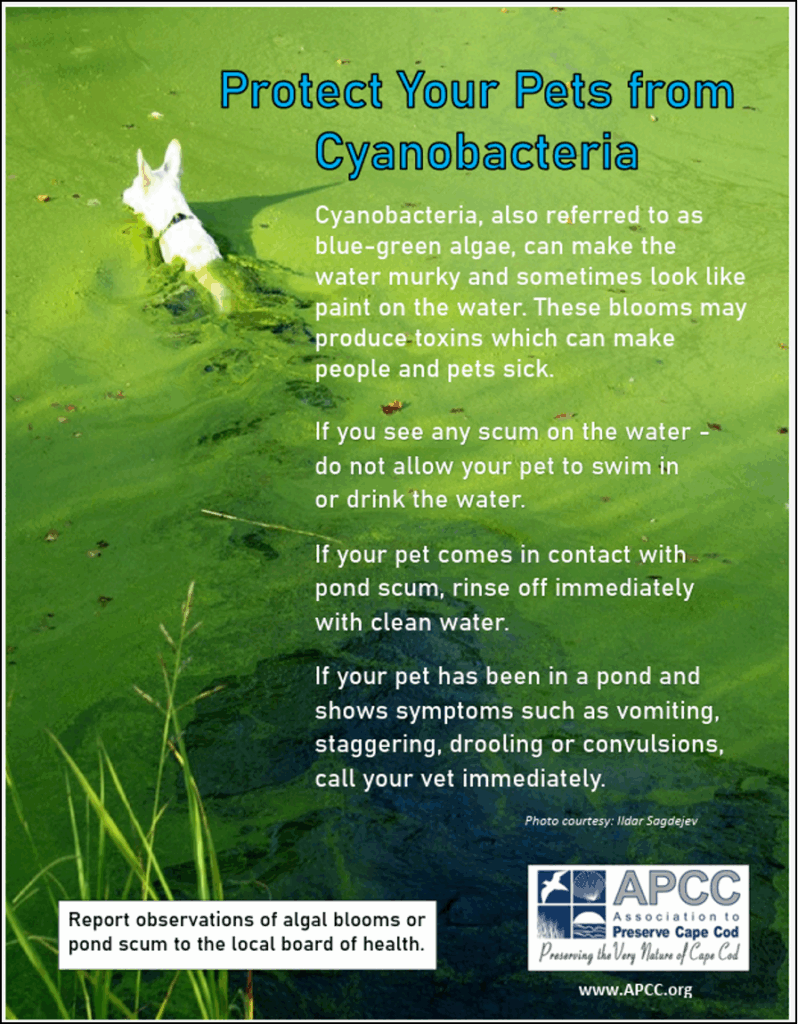
Click the image above to view an informative presentation about cyanobacteria from an APCC expert https://waquoitbayreserve.org/wp-content/uploads/10_Julie-Hambrook-Berkman_Cyanobacteria-Monitoring-in-Cape-Cod-Ponds-and-Bourne-Pond.pdf
Center for Disease Control video on cyanobacteria cautions https://www.youtube.com/watch?v=50w0_IwqSKs
